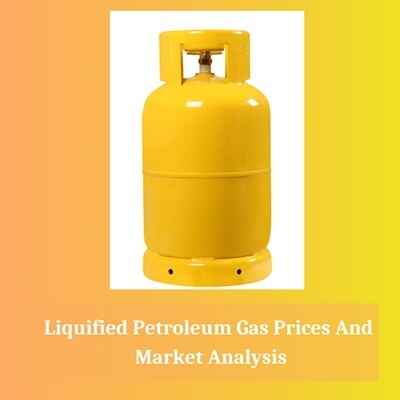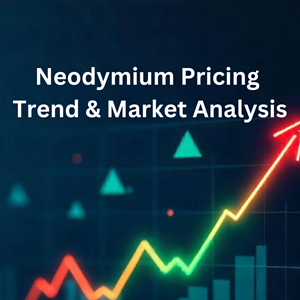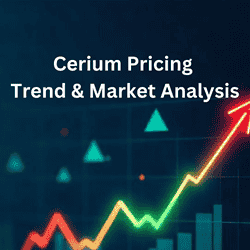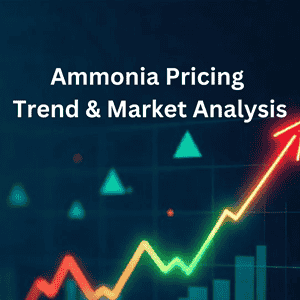LPG Price Predictions for 2025: What to Expect in the Global Market

Strong 8k brings an ultra-HD IPTV experience to your living room and your pocket.
Liquefied Petroleum Gas (LPG) is a crucial energy source that powers homes, industries, and vehicles around the world. As we approach 2025, the LPG market is expected to experience significant changes due to various factors that affect its price. This article will delve into the key elements that will determine LPG price trends in 2025 and offer insights into what consumers, businesses, and investors should anticipate.
What is LPG and Why is it Important?
LPG, which consists mainly of propane and butane, is used in a variety of applications, including domestic cooking, heating, and as a fuel for vehicles. It is known for its efficiency and clean-burning qualities, making it an ideal energy source for many households and industries. As a byproduct of natural gas and crude oil production, the price of LPG is heavily influenced by fluctuations in the oil market.
The demand for LPG is expected to rise as more people in emerging economies, especially in Asia and Africa, turn to cleaner energy sources. This will lead to higher global consumption of LPG, which will be a major factor in determining its price in the coming years.
Key Factors Influencing LPG Prices in 2025
1. Global Demand Growth
One of the primary factors that will affect LPG prices in 2025 is the increasing demand for this fuel, particularly from developing countries. As nations in Asia, Africa, and Latin America continue to grow economically and urbanize, the demand for cleaner and more affordable energy sources like LPG will rise.
The rise of the middle class in these regions, combined with their need for cleaner cooking and heating solutions, will likely lead to a surge in LPG consumption. This growing demand from emerging markets is expected to create upward pressure on LPG prices in the global market.
2. Crude Oil Prices and Their Impact
Since LPG is produced alongside crude oil, the price of crude oil has a direct influence on the cost of LPG. When oil prices rise, the cost of producing LPG also increases, which in turn causes LPG prices to rise. Conversely, when oil prices decline, LPG prices generally follow suit.
The global oil market remains volatile, with geopolitical events, natural disasters, and fluctuations in supply and demand affecting oil prices. Given the interconnected nature of the oil and LPG markets, consumers and businesses should expect LPG prices to be sensitive to changes in the price of crude oil.
3. Technological Developments in LPG Production
Technological advancements in the extraction and liquefaction of LPG are expected to play a crucial role in determining its price in 2025. Innovations that make the production process more efficient or reduce transportation costs could help keep prices stable or even lower them in some regions.
For example, improvements in liquefaction technology, which converts natural gas into its liquid form for easier transport, could help reduce production costs. In addition, enhanced storage and transportation methods will allow for better supply chain management, which could mitigate the effects of price volatility and supply disruptions.
4. Geopolitical Tensions and Oil Supply Risks
LPG prices are also influenced by geopolitical factors and potential disruptions to oil supply. Many oil-producing regions, including the Middle East, Africa, and Russia, face political instability or geopolitical tensions that can affect both oil and LPG production.
For instance, conflicts in key oil-producing countries, such as the Middle East, can disrupt the global supply of crude oil and LPG, leading to price hikes. Similarly, trade wars, sanctions, and natural disasters can cause temporary shortages, which result in price spikes.
In 2025, geopolitical risks will remain a significant consideration for anyone involved in the LPG market. As tensions in global energy markets continue to evolve, LPG prices will likely be impacted by shifts in production or disruptions to supply chains.
5. Environmental Policies and Sustainability Goals
As more governments around the world enact policies aimed at reducing carbon emissions and promoting sustainable energy solutions, LPG will continue to play a role as a cleaner alternative to coal and other high-emission fuels. However, governments may also implement regulations that can affect the cost of producing or consuming LPG.
For instance, carbon taxes or stricter emissions standards could increase the price of LPG production. On the other hand, subsidies or incentives for the use of cleaner fuels could help maintain affordable prices for consumers, particularly in countries with large LPG consumption, like India.
In addition, global initiatives such as the Paris Agreement are pushing countries to reduce their reliance on fossil fuels. This may create new demand for alternative energy sources, potentially influencing LPG prices based on how regulations evolve over time.
6. Supply Chain Challenges
LPG is transported globally, and its price can be significantly affected by disruptions in the supply chain. Natural disasters, accidents, and logistical challenges can cause temporary shortages, pushing prices higher in the short term. Additionally, delays in production or transportation, especially in regions prone to extreme weather, can exacerbate supply issues.
In 2025, if there are any significant supply chain disruptions—whether caused by extreme weather events, political issues, or accidents—LPG prices may experience short-term volatility. Such disruptions are common in energy markets, and it’s important to stay aware of any potential risks to global supply chains.
What to Expect in 2025: Price Forecast for LPG
As we look ahead to 2025, several trends are likely to shape LPG prices:
Increasing Demand from Emerging Markets: Countries in Asia, Africa, and Latin America will continue to drive LPG demand, which may lead to higher prices.
Crude Oil Price Volatility: LPG prices will remain sensitive to fluctuations in the price of crude oil, and consumers should be prepared for potential price hikes or drops depending on oil market dynamics.
Technological Innovations: Advances in production and distribution technology will help optimize LPG supply chains, potentially stabilizing prices and reducing costs.
Geopolitical Risks: Events such as conflicts, sanctions, and trade disputes in key oil-producing regions could disrupt LPG supply and cause price spikes.
Environmental Regulations: As governments implement policies to promote cleaner energy, LPG prices may increase due to rising production costs or taxes on fossil fuels.
What Consumers Can Expect
Given the various factors influencing LPG prices, consumers can expect fluctuations in pricing throughout 2025. Rising demand, geopolitical uncertainties, and technological innovations will all play a role in shaping LPG price trends.
For businesses and individuals who rely on LPG for energy, staying informed about market conditions is essential to preparing for potential price changes. Monitoring oil prices, government policies, and global geopolitical events can help predict LPG price movements.
In conclusion, the LPG market in 2025 will be shaped by a combination of rising demand from emerging economies, oil price fluctuations, environmental policies, and geopolitical risks. While prices are expected to fluctuate throughout the year, understanding these key factors will help consumers and businesses navigate potential challenges in the LPG market.
As global energy markets continue to evolve, it’s important for consumers to stay informed about pricing trends and adjust their energy usage accordingly. With the right information, individuals and businesses can make more informed decisions about how to manage LPG consumption and control costs in an increasingly complex energy landscape.
Stay informed with Price-Watch. For more insights, in-depth analysis, and the latest updates on global commodities, visit our website. Explore how our data-driven intelligence can help you make smarter decisions and stay ahead of the market.
Note: IndiBlogHub features both user-submitted and editorial content. We do not verify third-party contributions. Read our Disclaimer and Privacy Policyfor details.







